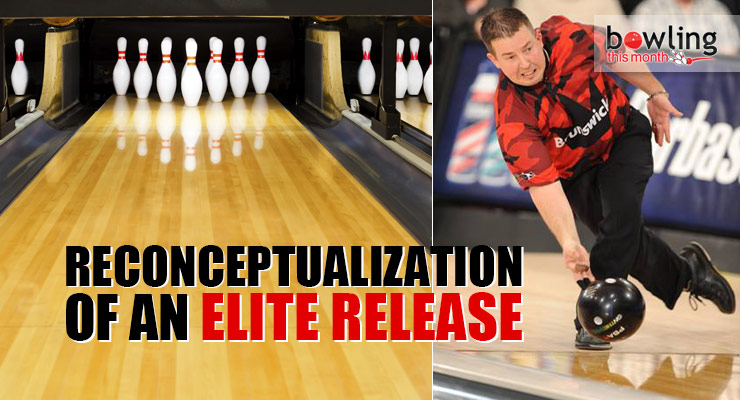Article Contents
- 1. Release-to-follow through as energy transfer
- 2. Wrist flexion to wrist extension
- 3. Elbow extension from release-to-follow through
- 4. Release-to-follow through in 4D
- 5. Lateral truck flexion
- 6. Supination of the hand
- 7. Ball speed
- 8. The non-bowling arm
- 9. Thumb exit
- 10. Some likely issues with the release
- 11. Wrist supports
- 12. Resources
- 12.1. Foul line release drill
- 12.2. Fitness for release improvement
Note: This article is only available to Bowling This Month subscribers.
Wherever I travel in the world, I get the same response when I query bowlers about which area of their game they most want to improve. “How many of you want more revs?” I ask. All hands rocket to the sky. Honestly, it is like an epidemic where 100 percent of bowlers around the globe are rev envious, wanting more rotational velocity even when they already have enough to be productive. Although axis rotation variation creates significantly more ball motion change, bowlers are infatuated with rotational velocity.
The release is one of the most misunderstood aspects of bowling. For those who have elite release movement, it appears easy to accomplish. So much information on the internet serves to not only misinform bowlers but also to mystify and confuse them on the processes of the release.
In this article, I will deconstruct how an elite release is created. My goal is to help readers re-conceptualize what an elite release is and how it is achieved. I will use biomechanically correct terminology, as I believe we should use a shared language based on sport science.
Release-to-follow through as energy transfer
Think of the release-to-follow through as the point of the physical game in which the bowler imparts energy from the body to the ball. Like other coaches, I do not believe there should be labels like stroker, tweener, and cranker. Such labels do not aid in improving our understanding of biomechanics and efficient energy transfer. The release-to-follow through should be seen through the lens of energy efficiency levels. The more efficient this transfer of energy, the faster ball speeds and higher rotational velocity (RPMs) will be achieved.
From my perspective, the objective of the physical game is to maximize energy transfer by attaining a body position and swing direction that enables the bowler to move through the center of the ball, maximizing the time and distance the fingers travel down the intended ...
Already a premium member? Click here to log in.


